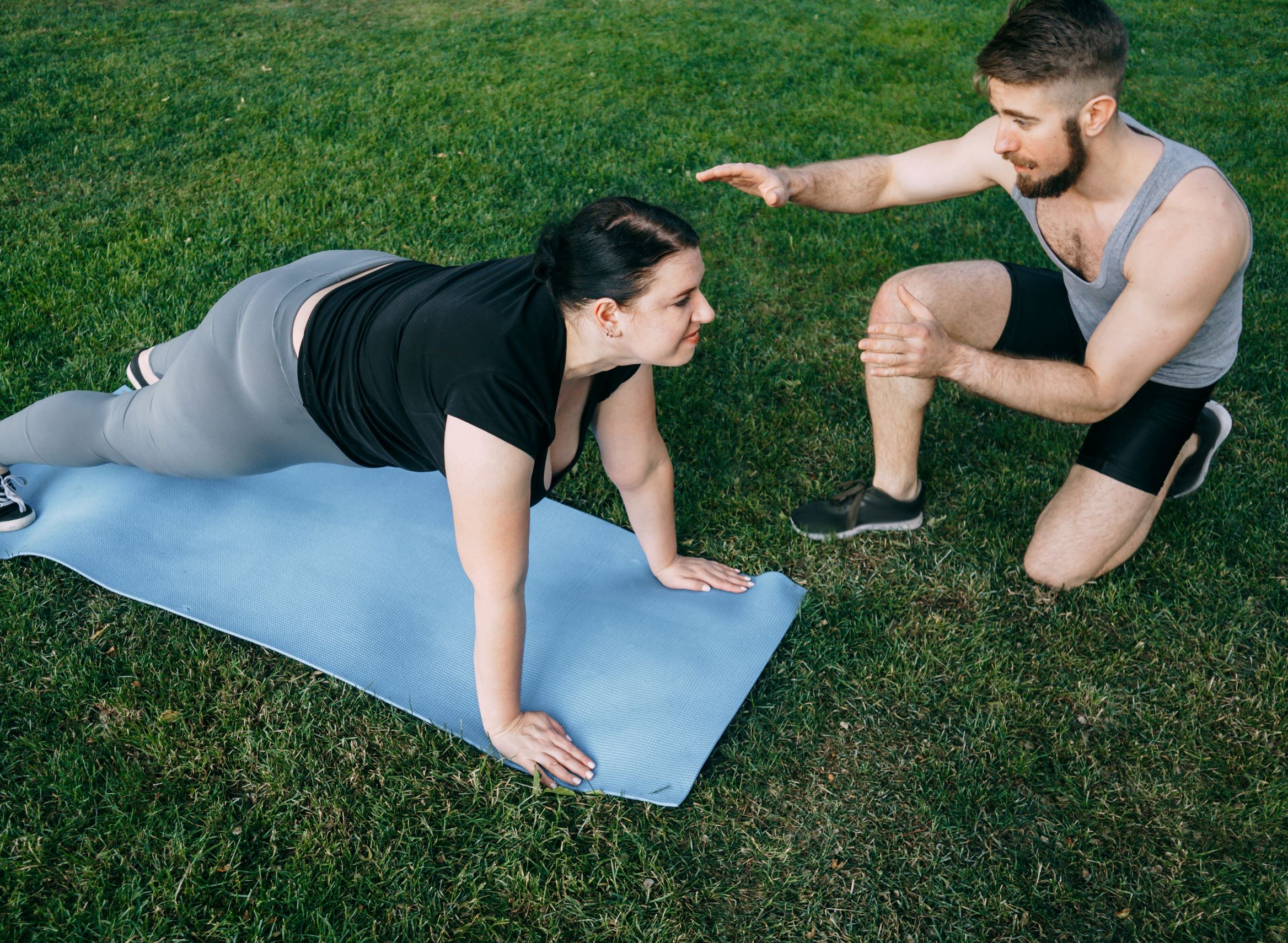We hear these cues all the time in the fitness industry:
“Squeeze your glutes”
“Hinge from your hips”
“Pull your shoulders back”
These types of cues direct your client’s focus of attention (FoA) inward. More specifically, they prompt your client to go inwards, to focus on body parts or segments, in order to emphasize technique (how a movement is being performed). As we discuss in the article How to Create “Fast-Learning” Clients, a focus on technique vs. outcome can lead to short-term, less reliable changes.
In contrast, directing your client’s focus of attention (FoA) externally — toward some aspect of her environment, or the goal she is trying to achieve — can be a far more effective way to improve performance because it’s just easier to visualize. Examples of external FoA cues include:
“Squash the bug” (to improve range of motion on a rotational move)
“Punch the ceiling” (to get full extension on an overhead press)
“Inhale into your fingers” (to encourage 360° expansion in rib cage on inhale)
Benefits of External FoA cues
Research on the superiority of external cues (in most situations) has been overwhelming. Performance measures that result from the use of external FoA cues include:
- Maximal strength output
- Maximal speed output
- Reduced oxygen consumption
- Reduced muscle activation
This last point sounds like a negative result but, in fact, indicates efficiency. If we need to use less resources — in this case, muscle fibers — to produce more strength and speed, that is a positive outcome.
This cueing strategy is especially beneficial for the pre & postnatal population because an internal focus on body segments, or technical execution, becomes more difficult with their bodies consistently changing.
Now that you know of the benefits of external cues, how do you construct them?
Components of External FoA cues
There are 2 key components that go into an external cue, and a third optional (but highly recommended) component:
- Targets: This helps clients visualize the specific direction you want them to move toward, like “punch the weight to the ceiling,” or “reach your tailbone to the back wall,” or “tap your tailbone to the bench.”
- Active Verbs: Using active verbs is another way to create an image of the action you want the client to create. In the example above, “punch the weight to the ceiling” creates a different image than “raise the weight to the ceiling.” The first example indicates an explosive, more powerful movement, whereas the second indicates a slower, more controlled action. Depending on what quality you want to develop, your verb choice should be specific. And, in general, more active verbs will create better, more dynamic performances (i.e. push, drive, explode, reach, pull, whip).
- Analogies (optional, but encouraged): Analogies can be the most powerful of all of the components of external FoA cues, provided they resonate with a client. Examples include “launch into the air like a rocket,” or “walk to the wall like you are balancing a book on your head.” These are very easy for almost any client to visualize. Another great option is to use analogies that your client has a prior relationship with. For example, if your client has a lacrosse background, telling him to “land from a jump like you are cradling a catch” has a deeper, more intrinsic meaning than if you were to instruct him to “land softly.” Remember, the key here is that the analogy must resonate with the client to be effective.
Shifting Your Cues
Now that you have a sense of how external cues are constructed, it’s important to practice taking your most well-utilized internal cues and turning them into external ones. Here are a few examples to get you started:
- “Squeeze your glutes” becomes “Crush a walnut between your butt cheeks” (courtesy of Dr. Stuart McGill)
- “Hinge from your hips” becomes “Reach your tailbone toward the wall behind you”
- “Pull your shoulders back” becomes “Squeeze an orange between your shoulder blades“
This external FoA concept, and the process used to execute it, takes practice. Be patient with yourself and know that even the most seasoned fit pros do use internal FoA cues periodically. Depending on your clients’ needs and levels of kinesthetic awareness, internal cues do have a place. But, on balance, you want to shift your language towards external FoA cues to have the greatest impact on your clients.
Transforming Your Feedback (and your clients’ progress)
In our mini course, Transformative Feedback: How to Create “Fast-Learning” Clients, you will learn an evidence-based, 3-step coaching methodology to accelerate your clients’ natural learning process so they progress faster and further. The cueing strategy we discussed is just one component of step 3 in this process.
This methodology is especially important for the pre & postnatal population, but as you will learn in the course, it can have a “transformative” effect on ANY client. In fact, you will see case studies from a variety of client profiles — including an athlete, senior, “desk jockey” and more. Learn more about the course, and how it can help you transform your coaching, and the results your clients see.
